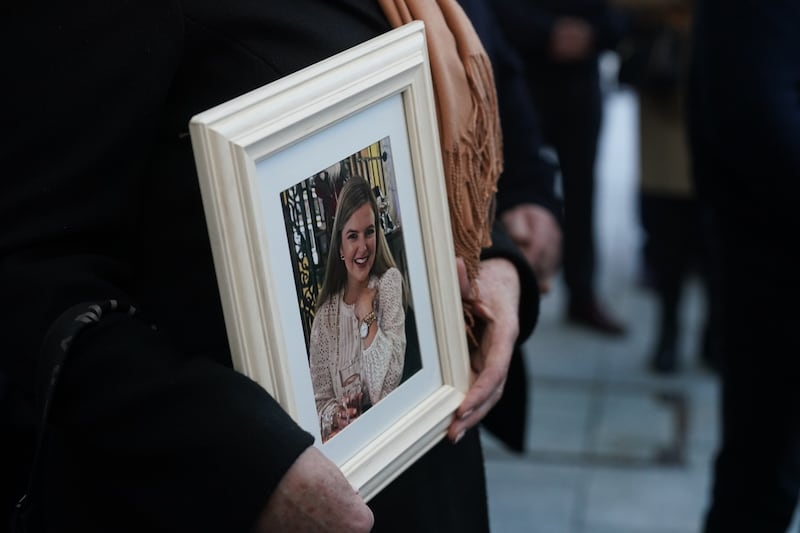There was an “erratic” fluctuation of smartwatch Fitbit data minutes before Ashling Murphy’s death, a court has heard.
Ms Murphy, 23, was killed while out exercising along a canal path in Tullamore, Co Offaly, on January 12 last year.
Jozef Puska, 33, of Lynally Grove in Mucklagh, Tullamore, has pleaded not guilty to the schoolteacher’s murder.
Gardai addressed the court in relation to a Fitbit smartwatch and account liked to an email address that included the words “ashling murphy”.
Garda Ciaran Byrne told the Central Criminal Court on Tuesday that the data from the smartwatch fluctuates “quite quickly” from 3.21pm onwards in a way that he did not observe in previous exercises that had been tracked.
Mr Byrne said that he examined the data from the Fitbit watch, shown in court, and cross-checked the data it collected on elevation and direction against a test he carried out along the same canal route.
He said the Fitbit data indicates the user travelled 1km along the canal walk by 3.01pm, 2km by 3.10pm and 3km by 3.20pm.
Mr Byrne told the court that from 3.21pm, there was no longer any consistent data recorded by the smartwatch.
He said that there was a 90 degree angle recorded for most of the exercise session, indicating the user travelled in an easterly direction.
At 3.16pm, he said there was a change from 90 up to 270 degrees, as the user appears to do a u-turn and walk in a westerly direction.
He said that at 3.21pm, the user of the watch is no longer travelling in a westerly direction, and the data indicates “an erratic or violent movement” where the orientation being tracked by the smartwatch is moving “quite quickly from 0 to 360 degrees” in a constant manner.
Mr Byrne said that it seemed to be going from 0 to 360 repeatedly in a very short space of time.
The witness told the court he could not see that happening in any of the previous exercises logged by the user.
He also said that “having walked the route myself”, the activity took place at “the spot where the memorial now stands”.
In heartrate data tracked by the Fitbit watch, recorded in beats per minute (bpm), the start of the exercise session tracks a rate of around 100bpm, the court heard.
At 3.21pm, the heartrate decreases rapidly, Mr Byrne told the court, and falls to a point around 60bpm at 3.27pm.
At 3.27pm the heartrate increases rapidly until 3.31pm, when the Fitbit no longer picks up a heartrate, Mr Byrne said.
He said the watch did not record any values for a heartrate after 3.31pm.
Under questioning from defence barrister Michael Bowman SC, Mr Byrne confirmed that the time on the Huawei smartphone linked to the Fitbit watch and account was correct, and confirmed to the court that he did check.
Mr Bowman suggested to Mr Byrne that there was a need to be careful with the accuracy of the data, and questioned whether the data on one graph indicated there was movement at a time when Ms Murphy is “certainly not moving”.
Mr Bowman suggested that the company has stated the device’s data is not intended for medical or scientific use, and Mr Byrne replied that they give a plus or minus range of 10%.
Mr Byrne confirmed to prosecuting barrister Kevin White, BL, that he cross-checked the consistency of the Fitbit’s readings against another smartwatch, and told the court he was satisfied with the consistency between the two readings.








